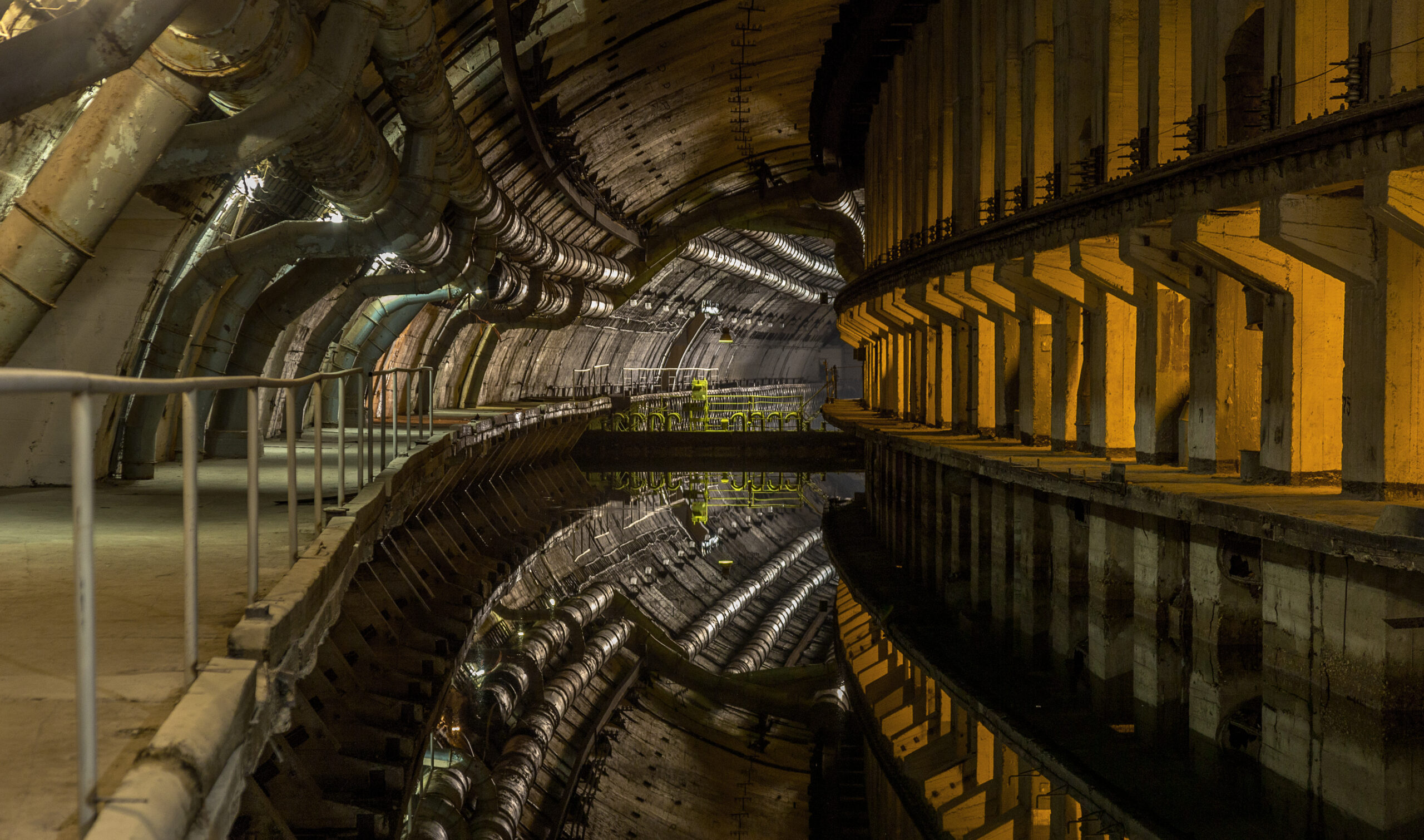Military bases are often shrouded in mystery, holding secrets of the past and remnants of once-bustling activity. Some of these installations have been abandoned, leaving behind eerie ruins and chilling tales that whisper through their decayed walls. These forgotten sites offer a glimpse into a bygone era where power, secrecy, and tragedy often intertwined. Below, we delve into the fascinating and ghostly pasts of some of the world’s most forgotten military bases.
Fort Ord, California, USA

Perched on the scenic California coastline, Fort Ord served as a major U.S. Army base from 1917 until its closure in 1994. Once bustling with soldiers training for World War II, Korea, and Vietnam, the fort now stands as a desolate site with overgrown barracks and empty firing ranges. Many visitors and locals report unsettling experiences, including hearing phantom footsteps and distant gunfire echoing through the abandoned buildings. The military cemetery on site adds to the eerie atmosphere, with whispers of soldiers’ spirits still wandering the grounds. The site has been partially redeveloped, but large portions remain untouched, preserving its chilling history.
Hashima Island (Battleship Island), Japan

Hashima Island, nicknamed “Battleship Island” for its silhouette, was once a thriving coal mining facility that housed thousands of workers. During World War II, it became infamous as a site where forced laborers, including prisoners of war, toiled under harsh conditions. Following the closure of the mines in 1974, the island was abandoned, leaving a ghost town of decaying concrete structures. Today, the island stands as a haunting reminder of Japan’s wartime history, with stories of unmarked graves and lost souls. Its eerie ruins have captured imaginations worldwide, even serving as a setting for the James Bond film Skyfall.
RAF Croft, England, UK

RAF Croft, located in North Yorkshire, England, played a key role during World War II as an airfield for bombers. Over time, the base was abandoned, and its once-busy hangars and runways became overgrown. Locals have long whispered about the spirits of airmen who never returned from missions, with sightings of ghostly figures in flight suits and unexplained sounds of planes overhead. During demolition efforts, workers claimed to hear strange whispers and feel cold drafts in empty rooms. Although much of the base has been repurposed, its chilling legacy lingers in local lore.
Balaklava Submarine Base, Ukraine

Hidden within a mountain on the Black Sea coast, Balaklava Submarine Base was a top-secret Soviet facility during the Cold War. Designed to withstand nuclear attacks, the base was a hub for covert submarine operations. After the fall of the Soviet Union, the base was abandoned, leaving behind empty tunnels and eerie silence. Visitors to the site have described the unsettling feeling of being watched and hearing echoes in the dark, damp corridors. The sheer scale of the underground complex, combined with its Cold War history, gives Balaklava an undeniably haunting aura.
Fort Hancock, New Jersey, USA

Fort Hancock, located at the tip of Sandy Hook, protected New York Harbor for over a century before its closure in 1974. The fort’s iconic yellow-brick buildings now stand as silent witnesses to its past, with rumors of hauntings adding to its mystique. Soldiers stationed there during World War II spoke of strange apparitions and unexplained noises, tales that persist today. Ghost tours have documented sightings of shadowy figures and cold spots in certain areas of the fort. Its long history, combined with the desolate seaside setting, makes Fort Hancock a chilling yet captivating site.
Karosta Naval Port, Latvia

Built during the Russian Empire and later used by the Soviets, Karosta Naval Port in Latvia is a stark reminder of military dominance and oppression. The site includes a prison, where rebellious sailors and political prisoners faced brutal punishments, and it’s known for its grim history. Visitors and ghost hunters claim the prison is one of the most haunted places in Europe, with accounts of cell doors slamming shut on their own and chilling cries echoing through the hallways. The decaying buildings, combined with the port’s tragic past, make Karosta a destination for those intrigued by the macabre.
Wolf’s Lair, Poland

Wolf’s Lair, Adolf Hitler’s Eastern Front military headquarters, is a site steeped in infamy and tragedy. Located in a dense forest in Poland, the bunker complex was the setting of the failed assassination attempt on Hitler in 1944. After being abandoned and partially destroyed by retreating German forces, the site has been left as a haunting relic of Nazi Germany. Visitors report an oppressive atmosphere, with stories of ghostly whispers and the lingering feeling of dread. The crumbling ruins stand as a stark reminder of the horrors of war and the dark plans once plotted within its walls.
Duga Radar System (Chernobyl-2), Ukraine

Tucked away in the shadow of the Chernobyl Exclusion Zone, the Duga Radar System, also known as the “Russian Woodpecker,” was a Cold War-era over-the-horizon radar designed to detect missile launches. This massive steel structure looms like a ghost over the abandoned landscape, its purpose now a relic of Soviet paranoia. The system emitted a mysterious signal that baffled radio operators worldwide, fueling conspiracy theories about mind control and weather manipulation. After the Chernobyl disaster in 1986, the site was hastily evacuated, leaving it eerily intact. Visitors to the radar often report a deep sense of unease, with the oppressive silence of the area interrupted only by the wind rattling through the decayed metal.
Bikini Atoll, Marshall Islands

Once a tropical paradise, Bikini Atoll became a site of devastation and mystery following its use for nuclear testing during the Cold War. Between 1946 and 1958, the U.S. conducted over 20 nuclear detonations here, rendering the island uninhabitable and leaving its azure waters contaminated. Many of the displaced islanders believed the spirits of their ancestors were angered by the destruction, and divers exploring the submerged ruins of warships from the tests have reported unsettling experiences. The irradiated landscape, combined with ghostly shipwrecks and lingering radiation, gives Bikini Atoll an otherworldly and haunting atmosphere.
Teufelsberg Listening Station, Berlin, Germany

Built on a man-made hill of World War II rubble, Teufelsberg Listening Station in Berlin served as a top-secret NSA spy post during the Cold War. Its giant domes once housed sophisticated equipment used to intercept Soviet communications. After the base was abandoned in the 1990s, the eerie remains of the radar domes became a playground for graffiti artists and urban explorers. The wind howls through the cracked structures, creating haunting echoes. Locals tell stories of strange noises and shadows moving in the empty halls, adding a layer of mystery to its already intriguing history.
Camp Century, Greenland

Beneath the ice sheets of Greenland lies the abandoned Camp Century, a U.S. Army base built during the Cold War. Conceived as a research station, it also housed Project Iceworm—a secret plan to deploy nuclear missiles under the ice. When the ice began to shift unpredictably, the base was abandoned, leaving its tunnels and machinery entombed in the ice. As the ice melts due to climate change, fears grow that radioactive and chemical waste may resurface. The camp’s isolated location and buried secrets create an unsettling aura, and the thought of its hidden dangers adds to its eerie reputation.
Fort Tilden, New York, USA

Situated along the shores of the Rockaway Peninsula, Fort Tilden was once a key military installation defending New York Harbor. Closed after World War II, the base is now a decaying stretch of bunkers, batteries, and overgrown trails. Visitors to the site often describe a surreal atmosphere, with rusting gun emplacements and graffiti-covered walls amplifying the sense of abandonment. Some believe the area is haunted, citing ghostly figures and inexplicable noises, especially near the disused missile silos. Despite its eerie presence, Fort Tilden draws curious explorers intrigued by its forgotten history.
Bunker-42 (Tagansky Protected Command Point), Russia

Hidden 213 feet beneath the streets of Moscow, Bunker-42 was a Cold War nuclear command post designed to survive direct atomic strikes. This sprawling underground fortress included living quarters, communication systems, and even a war room prepared for doomsday scenarios. Today, the bunker operates as a museum, but its cold, dimly lit tunnels evoke an unsettling atmosphere. Visitors often report feeling claustrophobic, and the grim reminders of nuclear annihilation add to the site’s ominous vibe. The thought of what might have unfolded here during a global conflict lends a chilling weight to its history.
This article originally appeared on Rarest.org.
More from Rarest.org
8 Canceled Movie Sequels That Fans Still Want

Some movie sequels never get a chance to shine, even when fans are eager to see more. Over the years, many beloved films left audiences wanting a continuation that was ultimately shelved. Read More.
12 Oldest Football Clubs in the World

Football’s roots go deep, with some of the oldest clubs dating back to the mid-19th century. These clubs paved the way for what we know today as the global game of soccer. Read More.
12 Largest Music Festivals in the United States

Music festivals in the U.S. have grown to epic proportions, drawing massive crowds worldwide. They feature top artists across genres and create unforgettable experiences for fans. Read More.
